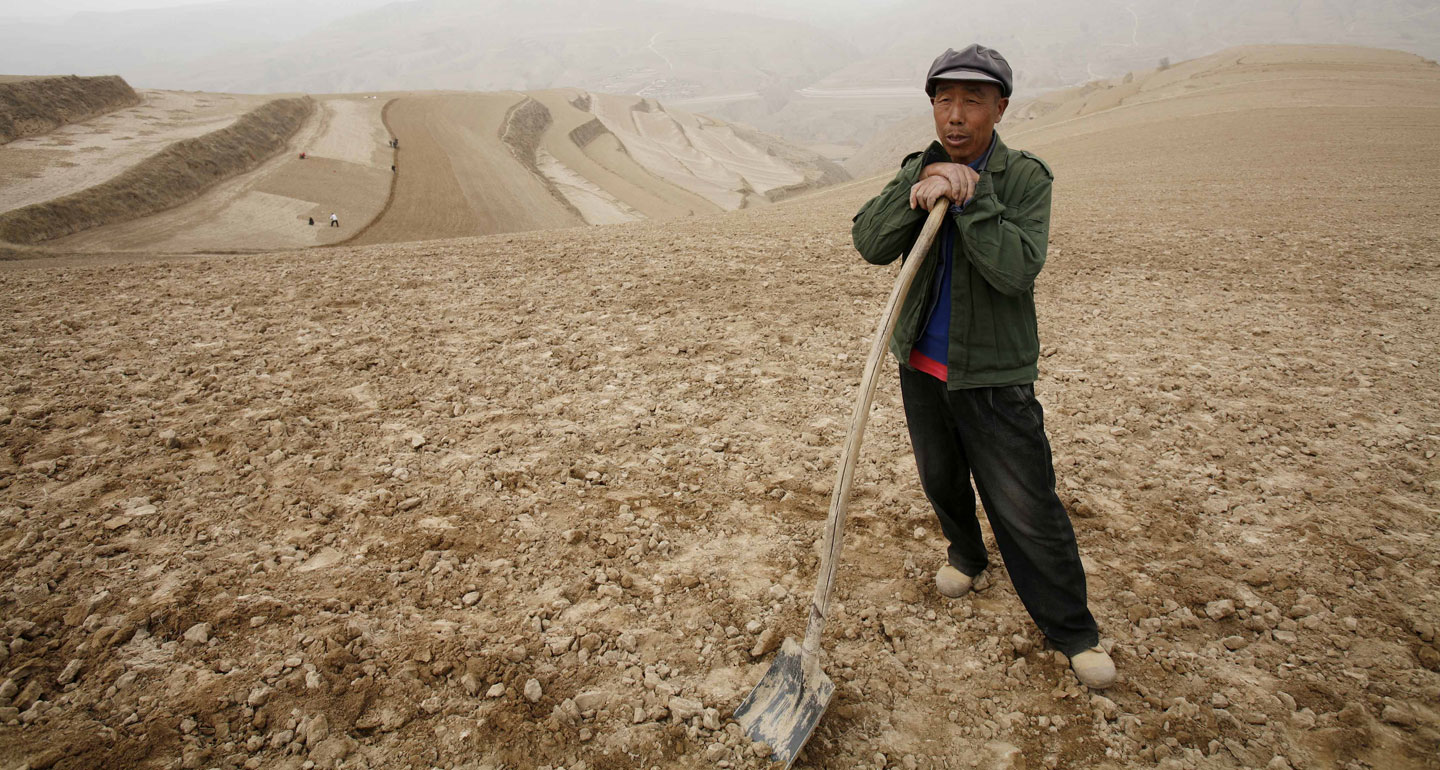China’s remaining challenges in reducing poverty
IFAD Asset Request Portlet
Asset Publisher
China’s remaining challenges in reducing poverty
Estimated reading time: 4 minutes
China - South Gansu Poverty-Reduction Programme
Next year China is hoping to announce that they have eradicated extreme poverty.
This would represent a unique accomplishment considering that, only 40 years ago, 90 per cent of the population – more than 800 million people – was living below the poverty line. No other country has ever been able to bring such a large number of people out of poverty in such relatively short period of time.
Such an achievement would indeed be a cause for celebration--but the end of absolute poverty does not mean the task for China is over. Here’s what I think are the top five challenges that China would need to deal with after 2020.
- Setting a new poverty line
By 2020, it is expected that no-one in China would live below US$1.90 per day, the international poverty line for absolute poverty. However, according to the Commission on Global Poverty, if a US$3.20 per day poverty line is adopted (the typical poverty line in lower-middle-income countries), 96 million people – or seven per cent of the population – would still live below this threshold in China. More than that: if the typical poverty line in upper-middle-income countries is adopted, i.e. US$5.50 per day, 373 million people – or 27 per cent of the population – would still live in poverty. Whichever new poverty line is adopted, a significant portion of the population would still be in need.
Bringing people above these thresholds represents the first challenge for China in the years after 2020.
- Reducing vulnerabilities and preventing that those that were brought out of poverty fall back into poverty
If all the people who were living below the poverty line before 2020 were brought out of poverty by 2020, they would still remain vulnerable to shocks. Diseases or other unforeseen events, the loss of a job or long periods of unemployment, the costs of children's education, unfavourable weather events or fluctuations in price commodities – particularly for those households engaged in agriculture – may easily plunge this segment of population back into poverty.
Similarly, those people that were just above the poverty line, and therefore were not the target of the extensive poverty reduction programmes that were implemented in the country in past years, may be equally vulnerable to the same shocks – and equally at risk of falling into poverty.
Making these two categories of people more resilient to shocks and preventing them from falling back into poverty – or, in other words, ensuring the long-term sustainability of the poverty reduction achievements – is the second challenge that the country would need to deal with in the next few years.
- Reducing inequalities
Inequality (between urban and rural areas, between western and coastal provinces, between better-off and worst-off counties in the same province, and between different groups within society – with women, older people, children, disabled people and ethnic minorities being the most vulnerable groups) would still persist after 2020.
Despite the rapid growth of farmers' income, according to the 2018's Statistics Bulletin on National Economic and Social Development, average income in urban areas is still almost three times higher than that in rural areas. According to the National Bureau of Statistics, the average income in the Eastern region of China is still almost two-times higher than in Western China, and the average income in the "nationally defined poor counties" is more than 30 per cent lower than the average national rural income. Data from the Chinese Household Income Project (CHIP) suggest that women's average income is 20 per cent lower than men's income.
Although, according to the World Bank, the value of GINI coefficient in China (the coefficient that measures inequality in a society) has been decreasing since 2010, suggesting some improvements as far as equality in the society is concerned, its value remains relatively high (38.6) – a value significantly higher than 40 years ago, confirming that inequality remains a major issue in today's China.
- Making poverty reduction achievements financially sustainable
The financial burden of poverty reduction efforts on public finance has been tremendous.
According to the Ministry of Finance, it is estimated that the government spent over RMB1 trillion (about US$150 billion) for poverty reduction programmes over the past three years, and that the percentage of fiscal expenditure for poverty reduction reached 2.20 per cent in 2018.
This effort was certainly justified by the pursuit of the highest social goal – but it made poverty reduction extremely demanding on public resources.
Making poverty reduction achievements financially sustainable, that is to say sustainable without heavily depending on the injection of public resources, is the fourth challenge for China after 2020.
- Developing rural areas
Addressing rural poverty and providing the entire rural population with the minimum income necessary to meet the minimum living requirements was a moral imperative for China. Poverty reduction in rural China has been driven by the industrialization process and the resulting employment opportunities in the manufacturing and service sectors, which resulted in a massive migration of the population from rural areas to urban centres. Today, less than half of China's population live in rural areas – most of them are elderly, women, children and sick or disabled people.
The next challenge for China is to further develop the rural areas, both economically and socially, making them attractive for people to live in. This should be the medium- to long-term objective that Chinese society should set in 2020 for the decades to come.
Publication date: 04 November 2019